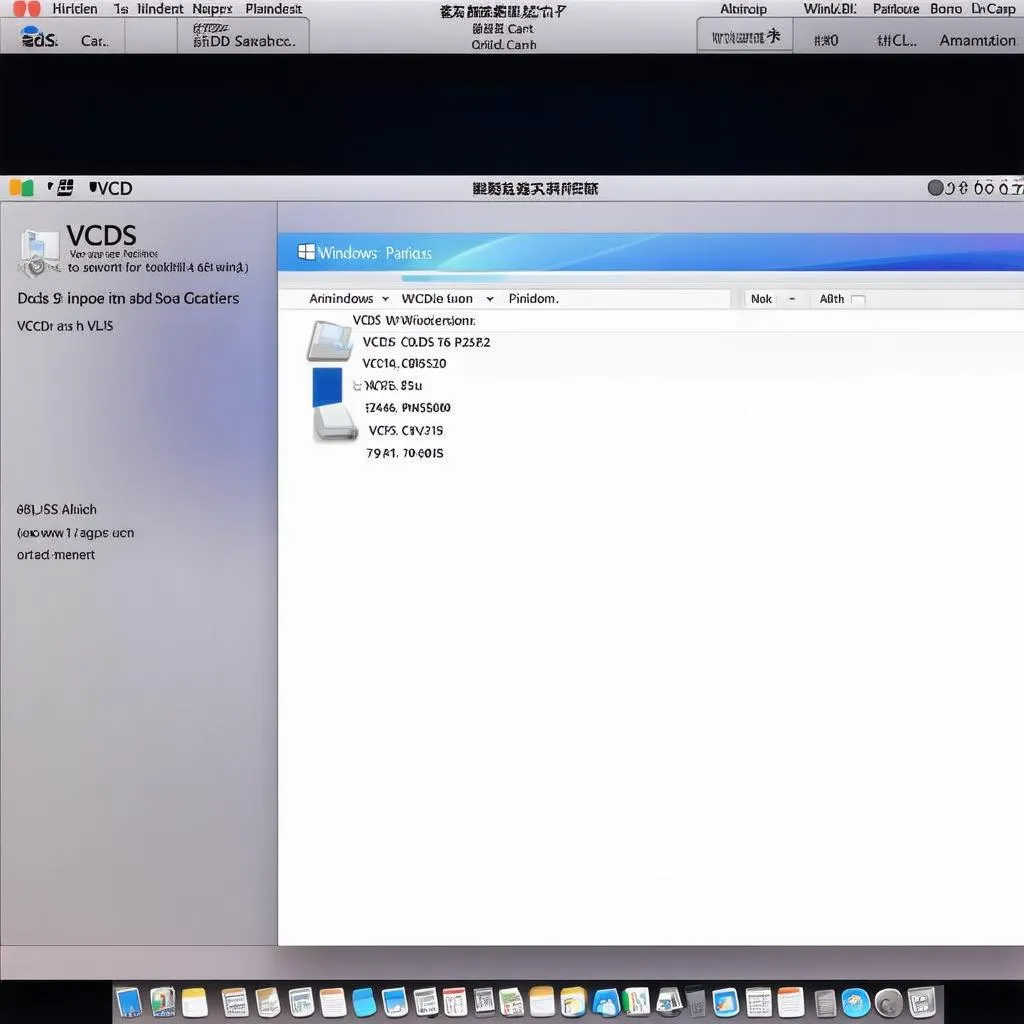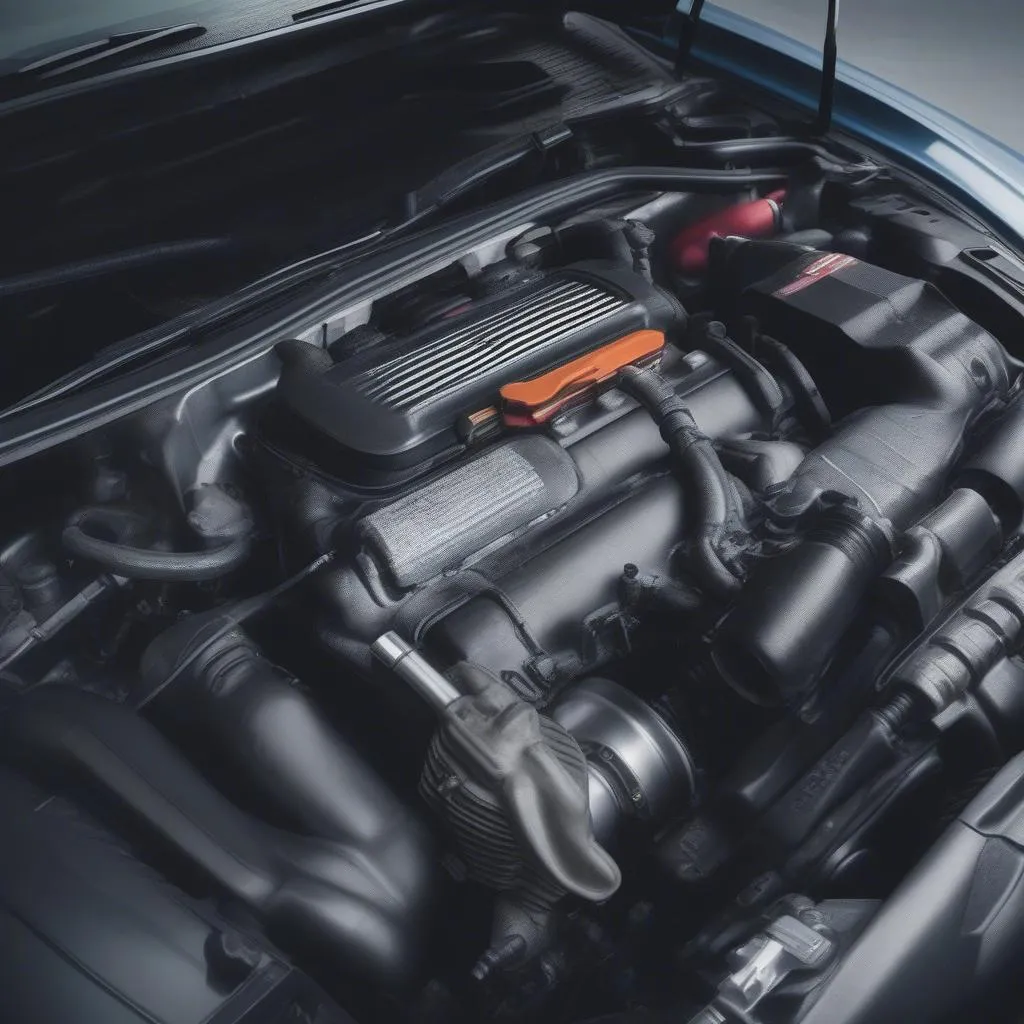Knowing how to check DPF soot level VCDS is crucial for maintaining your diesel vehicle’s health and performance. A clogged Diesel Particulate Filter (DPF) can lead to reduced fuel efficiency, decreased power, and costly repairs. This comprehensive guide will walk you through the process of checking your DPF soot level using VCDS, empowering you to address potential issues before they escalate.
Checking your DPF soot level with VCDS offers a precise and efficient method for diagnosing potential DPF issues. This diagnostic tool allows you to access detailed information about your vehicle’s systems, including the DPF, providing valuable insights into its current state. This guide is designed for both car owners and professional technicians seeking to understand how to use VCDS for effective DPF diagnostics. Learn how to interpret the data obtained from VCDS and what steps you should take based on the readings. You’ll also gain valuable insights into preventing future DPF problems and maintaining optimal vehicle performance. For those unfamiliar with VCDS, we’ll also cover some basics to help you get started. Are you ready to take control of your diesel vehicle’s health? Let’s dive in. You can also learn more about checking your DPF status with our guide on vcds check dpf status.
Understanding the DPF and Its Importance
The DPF is a critical component of modern diesel vehicles, responsible for trapping soot and other harmful particulate matter from the exhaust gases. Over time, this soot accumulates within the filter, requiring periodic regeneration to burn it off and maintain efficient operation.
Why Checking Your DPF Soot Level Matters
Ignoring a clogged DPF can lead to a range of problems, from reduced fuel economy and decreased engine power to costly repairs. Regularly checking your DPF soot level allows you to proactively address potential issues and prevent them from becoming major headaches.
How to Check DPF Soot Level Using VCDS
Here’s a step-by-step guide on how to check your DPF soot level using VCDS:
- Connect VCDS to your vehicle’s OBD-II port. Ensure the ignition is switched on.
- Select the correct module for your vehicle. This is typically labeled “Engine” or something similar.
- Navigate to the “Advanced Measuring Values” section.
- Locate the measuring block related to DPF soot mass or load. The exact name may vary depending on your vehicle’s make and model.
- Observe the displayed value. This value represents the current soot accumulation in your DPF. Compare this value to the manufacturer’s specified limits to determine if your DPF requires attention. You might find our guide on vcds dpf adaptation helpful.
Interpreting VCDS DPF Soot Level Readings
Understanding the readings you obtain from VCDS is vital for making informed decisions about your DPF’s health. High soot levels indicate a potential blockage, while low levels suggest a healthy DPF.
What to Do if Your Soot Level is High
If your DPF soot level is high, it’s crucial to take action to prevent further problems. This might involve initiating a forced DPF regeneration using VCDS or addressing any underlying issues contributing to excessive soot accumulation. If you’re experiencing a specific error code like P2002, our guide on p2002 vcds might be useful.
Preventing Future DPF Problems
Preventing DPF problems is often easier and more cost-effective than dealing with a clogged filter. Here are some preventative measures:
- Regularly drive your vehicle at highway speeds. This allows the DPF to passively regenerate.
- Use high-quality diesel fuel. Low-quality fuel can contribute to excessive soot buildup.
- Address any underlying engine problems promptly. Issues like faulty injectors can increase soot production.
“Regular maintenance is key to a healthy DPF,” advises John Smith, a certified automotive technician with over 20 years of experience. “Don’t wait for warning lights to appear before checking your DPF soot level. Proactive monitoring can save you time and money in the long run.”
Conclusion
Understanding how to check DPF soot level VCDS is a valuable skill for any diesel vehicle owner or technician. By regularly monitoring your DPF’s health, you can proactively address potential issues, preventing costly repairs and ensuring optimal vehicle performance. Remember, a healthy DPF contributes to a cleaner environment and a smoother driving experience. If you own a Passat, check out our vcds passat guide for more specific information. If you own an Audi Q7, you might find our guide on audi q7 dpf regeneration vcds helpful.
FAQ
- What is VCDS? VCDS is a diagnostic software used to access and interpret data from a vehicle’s control units.
- How often should I check my DPF soot level? It’s recommended to check your DPF soot level every few months or as part of your regular vehicle maintenance schedule.
- Can I perform a DPF regeneration myself using VCDS? Yes, VCDS allows you to initiate a forced DPF regeneration.
- What are the symptoms of a clogged DPF? Symptoms include reduced fuel economy, decreased engine power, and warning lights on the dashboard.
- What causes excessive DPF soot buildup? Causes include frequent short trips, low-quality fuel, and underlying engine problems.
- Is it safe to drive with a clogged DPF? Driving with a severely clogged DPF can cause further damage to your vehicle.
- How much does it cost to replace a DPF? DPF replacement can be expensive, ranging from several hundred to several thousand dollars.
Need more assistance? Check out our articles on VCDS DPF adaptation and VCDS check DPF status for more in-depth information.
Contact us via Whatsapp: +1 (641) 206-8880, Email: CARDIAGTECH[email protected] or visit us at 276 Reock St, City of Orange, NJ 07050, United States. Our customer support team is available 24/7.


